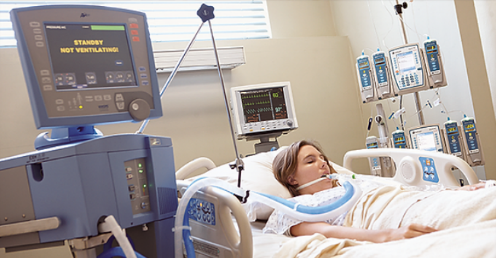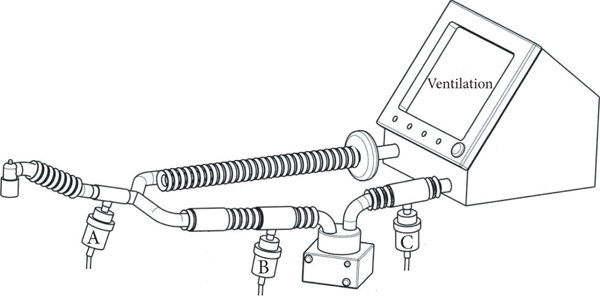Invasive mechanically assisted ventilation is a common treatment for intensive care unit (ICU) patients. Because of a variety of factors, including an aging population, the number of patients who receive mechanical ventilation is increasing. Each year, one-third of patients require mechanical ventilation (MV) for more than 48 h, and many patients require aerosol therapy during the MV. Aerosol therapy is a safe and convenient method of treatment and commonly used in patients with invasive MV in the ICU, especially for patients with asthma and chronic obstructive pulmonary disease. The three most commonly used aerosolizing drugs are bronchodilators, corticosteroids, and antibiotics. However, the effect of aerosolized inhalation is reduced due to the establishment of an artificial airway in a tracheal intubated patient. In patients with artificial airways, aerosol transmission was only one-sixth of what it was in patients without artificial airways. Over the past 25 years, with the development of aerosol equipment and operation technology, the aerosol delivery to invasive MV patients has almost been matched and even exceeded that reported in patients with nonartificial airways.

Many factors may affect the efficacious delivery of aerosols to the lungs. These factors are associated with patients, drugs, devices, artificial airways, ventilator settings, and ventilator circuits. The position of nebulizers placed by ICU nurses is another important factor. In clinical practice, the most common nebulizer position was between the tracheal tube and the Y-piece (41~46%) or after Y-piece (39~41%), respectively. Many in vitro tests showed that, when the nebulizer was placed after Y-piece or between the ventilator inlet and heated humidifier, drug delivery to the lungs was the largest.
A study indicated that when the nebulizer was placed 80 cm away from the Y-piece, the salbutamol concentrations were the highest in both serum and urine, whilst the lowest drug concentration was found when the nebulizer was located between the tracheal tube and Y-piece.

Different positions of the nebulizer
Most patients with invasive MV will receive aerosol therapy every day, and ICU nurses play a crucial role during the implementation of this therapy. However, some studies showed marked discrepancies in the nebulizer operation between trial and clinical practice paradigms. This was particularly true when it came to the optimal nebulizer position. Thus, targeted atomization education or training is necessary for all ICU nurses. Increasing the awareness of ICU nurses to different nebulizer positions will likely affect aerosol delivery and help determine which position is best for patients. Moreover, standards or guidelines for aerosol therapy should focus on standardizing the atomization operation and developing measures to deal with potential hazards. Furthermore, targeted atomization educational programs should be implemented through departments or hospital education and academic conferences. Finally, future atomization studies should attempt to mirror clinical practice settings and be easy to operate. Even though the study data shows that changing the ventilator parameters during the atomization operation may be more effective, this may be very difficult to implement in clinical practice.
Reference
[1] Tobin M., Manthous C. Mechanical ventilation. American Journal of Respiratory and Critical Care Medicine.
[2] Luyt C. E., Hékimian G., Bréchot N., Chastre J. Aerosol therapy for pneumonia in the intensive care unit. Clinics in Chest Medicine.
[3] Pleasants R. A., Hess D. R. Aerosol delivery devices for obstructive lung diseases. Respiratory Care.
[4] Wen M., Zheng F. M., Li G. X., Xu J. Q. Observation on the airway effect of nebulizer at different positions for patients undergoing mechanical ventilation. Chinese General Nursing.